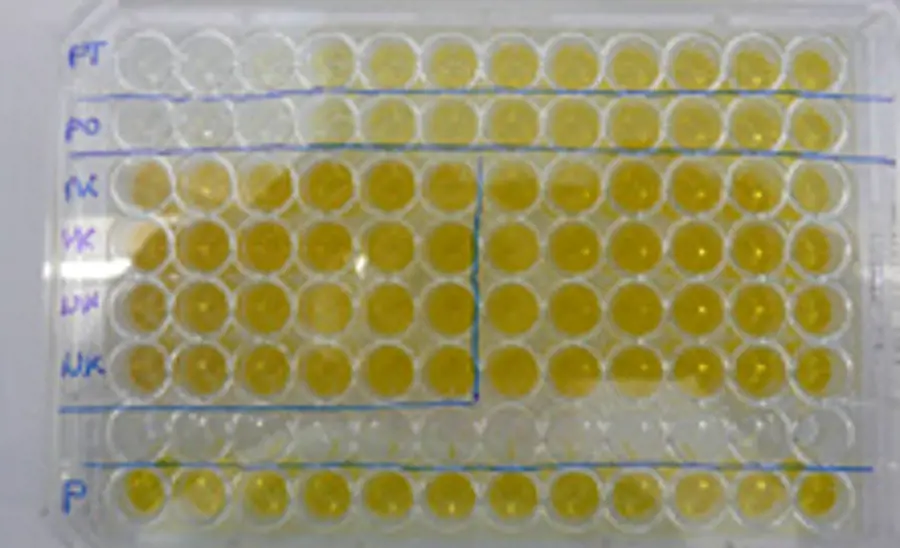Acetylcholinesterase Inhibition

Test organism
- Enzyme acetylcholinesterase (e.g. from the eel)
Detectable effects (impact)
- Inihibtion of the enzyme acetylcholinesterase (neurotoxic effect due to organophosphates or carbamates = insecticides)
Test principle
- Environmental toxins that inhibit the enzyme acetycholinesterase cause the accumulation of the transmitter substance acetylcholine in organisms. This leads to permanent muscle and nerve excitation and thus to damage of the organisms.
- Inhibition of the enzyme is determined after exposure to the substances or environmental samples to be analysed.
- Inhibition can be measured both in entire organisms and the isolated enzyme.
Test duration
- 1 day (exposure time: 10 min)
Relevance
- Suitable for example for detecting specific pesticides (organophosphates, carbamates) that specifically inhibit the enzyme acetylcholinesterase.
Guidelines and literature
- Deutsches Institut für Normung (1995). Deutsche Einheitsverfahren zur Wasser-, Abwasser- und Schlammuntersuchung - Suborganismische Testverfahren (Gruppe T) - Teil 1 : Bestimmung von Cholinesterase-hemmenden Organophosphat und Carbamat-Pestiziden (Cholinesterase-Hemmtest) (T 1). DIN 38415-1.
- Ellman GL, Courtney KD, Andres jr V, Featherstone RM (1961). A new and rapid colorimetric determination of acetylcholinesterase activity. Biochem. Pharmacol. 7: 88-90.
- Hamers T, Molin KRJ, Koeman JH, Murk AJ (2000). A small-volume bioassay for quantification of the esterase inhibiting potency of mixtures of organophosphate and carbamate insecticides in rainwater: Development and optimization. Toxicol. Sci. 58:60-67.